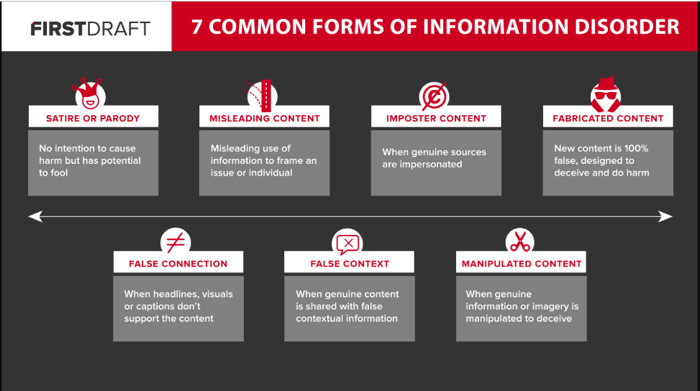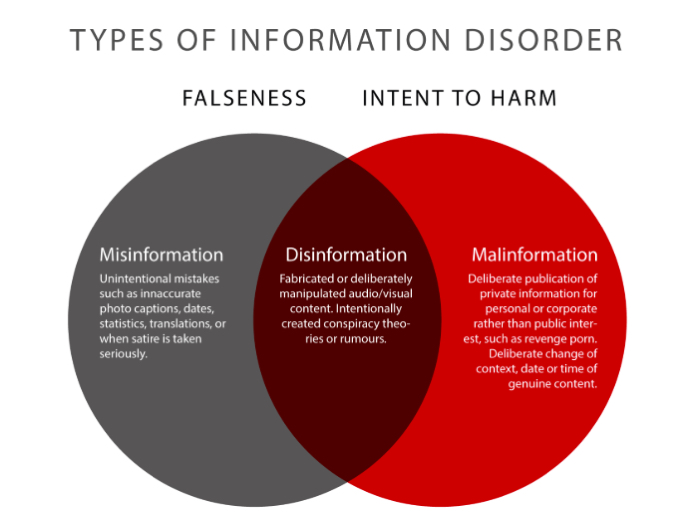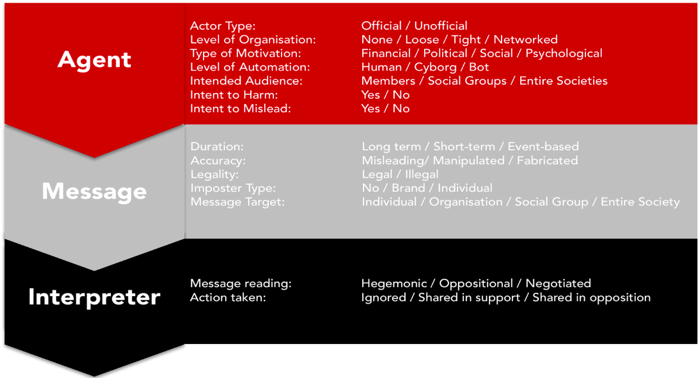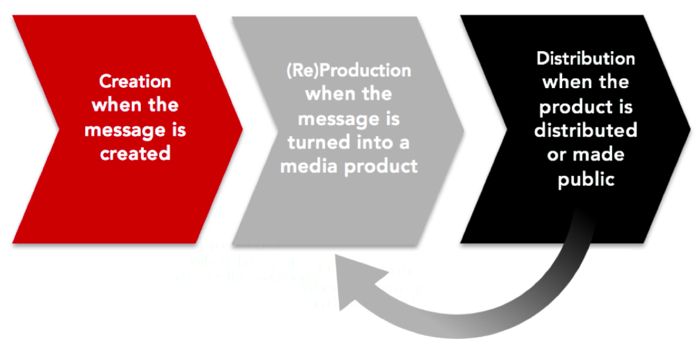
The following article is reproduced courtesy of First Draft News.

Categories, types, elements and phases
The high-resolution graphics below were created to help explain the different categories, types, elements, and phases of information disorder. They are available for use in publications and presentations under a Creative Commons BY-NC-ND 3.0 license. Click the link under each image to download it.
Categories of information disorder
Figure 1: The seven categories of information disorder. Credit: Claire Wardle, 2017. Click here to download high-resolution version.
- Satire or parody: No intention to cause harm but has potential to fool.
- Misleading content: Misleading use of information to frame an issue or individual.
- Imposter content: when genuine sources are impersonated.
- Fabricated content: New content is 100% false, designed to deceive and do harm.
- False connection: When headlines, visuals, or captions don’t support the content.
- False context: When genuine content is shared with false contextual information.
- Manipulated content: When genuine information or imagery is manipulated to deceive.

Types of information disorder
Figure 2: Three types of information disorder. Credit: Claire Wardle & Hossein Derakshan, 2017. Click here to download high-resolution version.
- Misinformation: Unintentional mistakes such as inaccurate photo captions, dates, statistics, translations, or when satire is taken seriously.
- Disinformation: Fabricated or deliberately manipulated audio.visual content. Intentionally created conspiracy theories or rumours.
- Malinformation: Deliberate publication of private information for personal or corporate rather than public interest. Deliberate change of context, date or time of genuine content.

Elements of information disorder
Figure 3: Three elements of information disorder. Credit: Claire Wardle & Hossein Derakshan, 2017. Click here to download high-resolution version.
- Agent
- Message
- Interpeter

Phases of information disorder
Figure 4: Three phases of information disorder. Credit: Claire Wardle & Hossein Derakshan, 2017. Click here to download high-resolution version.
- Creation: When the message is created.
- (Re) Production: When the message is turned into a media product.
- Distribution: When the product is distributed or made public.

Note: This material first appeared on First Draft and has been reproduced here with the author’s consent.








